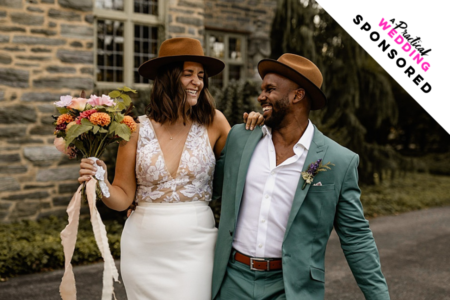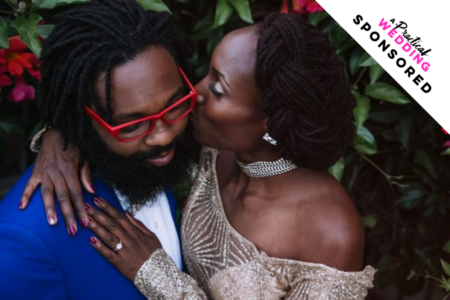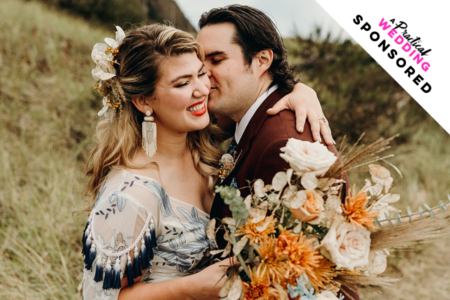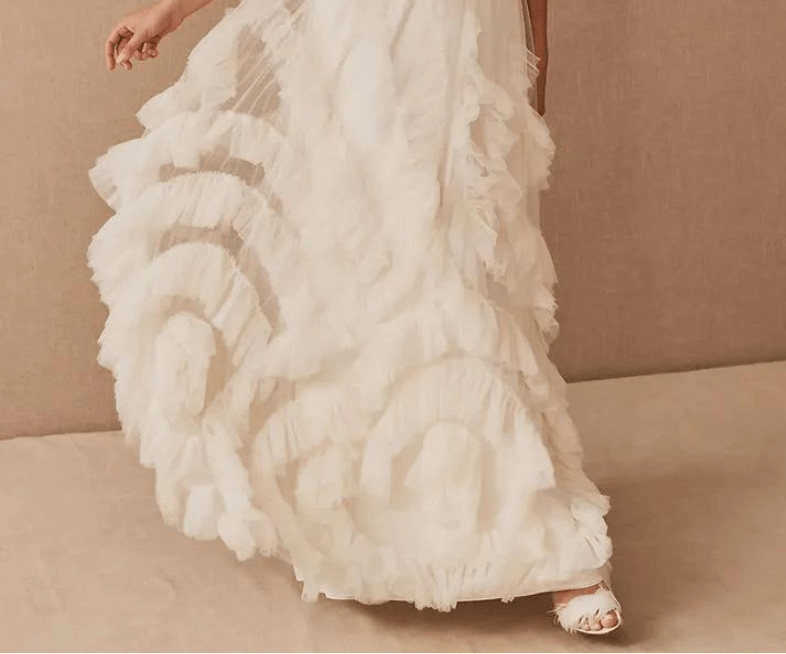
So. After learning about tools, layout, and typography, you guys are getting mad skillz to start making your own wedding stationery. But what about artwork? By artwork I mean pictures, imagery, background textures, graphics, illustrations, and the like. Well, there are lots of ways and plenty of sources to find pretty pictures and lovely artwork for your project.
Photographic imagery
We briefly touched on using photographs on wedding stationery in the post that covered layout. Essentially you’ve got two options; you can do it yourself or hire a professional.
If you do it yourself, consider reading up on some basic photography portraiture techniques, or taking something like an iPhone photography course. A big factor in styling your photo will be how you use it in the layout. Will the image be on its own, or will you want a portion of it to be covered by type? If it’s the latter, make sure to create space in the image where text can sit legibly and comfortably. See this Pinterest board for some good examples.

The photo on this elopement announcement from Up Up Creative is a great example. The stretch of ground in the upper left leaves the perfect place to add in a graphic banner for the date.
If you hire a professional and explain how you’ll be using the photographs, they’ll know what to do. Many photographers have a package where pre-wedding engagement style shoots are offered, and you can usually use these in your stationery design too. Just let your eyeballs wander to the right of this post for banner links to many fine options.
Illustrations
When it comes to Illustrations, there are a few more options. Again, you can do it yourself! Even if you think you can’t draw.
Remember tracing paper? You’ll be amazed what you can do with some tracing paper and scanner. If you find an image you like, trace it with a good black marker (something like a Sharpie or thinner) and scan it. If you’re using Illustrator, you can convert the image to vector art (see the post on tools) and manipulate it in the software.
If you can draw, you can (obviously) skip the tracing paper, and just use the scanner to get your artwork into digital form so you can work your drawing into a layout.

This illustration-driven Save the Date design from A Printable Press is good example of how powerful illustration can be in a stationery design.
If this sounds too daunting, you can also consider hiring a professional, like a calligrapher or a professional Illustrator. Just keep in mind, as with everything in life, you get what you pay for. Work from a good calligrapher, photographer, or illustrator will impact your budget. However, if you find someone who really gets what you’re trying to do, it can add an extremely classy, personal touch, which will be worth it.
I worked with a friend, fellow expat, and professional illustrator Stephanie Levy to create the “LeMayr” series, which uses her beautiful floral artwork. I cannot draw like this (designers and illustrators usually have two very different skill sets).
If the thought of drawing something or hiring an illustrator makes you want to take a nap, you’re in luck. There are some great places where you can find copyright free art to use in personal projects.
Dover Pictura: You may have seen Dover books that include CDs for various kinds of art, like florals or vintage commercial art. They also have a website where you can download these images. They usually come in collections, but now you can even purchase individual sheets if you see one particular image you like. You’ll likely need some kind of photo editing software to cut out the image and include it in your artwork.
Piddix: I’m a big fan of Piddix, where you’ll find gobs of vintage artwork, stamps, drawings and photographs. Corrina Bucholz runs the shop out of Portland, Oregon. She sources her images from places like estate sales and antique shops and then meticulously researches the copyrights behind the work. This is an excellent service and source, and her collage sheets average a very affordable four bucks each.
Keep in mind: When you purchase artwork, it needs to be high resolution to print well (300 pixels per inch or more). Sometimes you can get away with printing a web-quality 72 pixels per inch jpeg graphic; the only way to know is to test it. Also pay attention to the size. If an image is 3 x 2 inches in size, and you want to blow it up to a size larger than that, it won’t work; it will look grainy and terrible. So order an image in the size you need or larger.
Creative Market: Perhaps you need a background image; you’re, say, obsessed with the watercolor trend. A new player in town is Creative Market. This is kind of like an Etsy for artists and designers. There are tons of background images (or foreground images), textures, and hand drawn graphics all ready for immediate download, usually in high resolution. You have to buy a certain amount of credits, rather than just buy an individual item outright, but prices are reasonable. Look under the “Graphics” section. Pay attention to whether the imagery is vector (you can change it and manipulate it in Illustrator) or raster (you can change it in Photoshop) as well as the licensing restrictions, most everything is fine for personal use.






